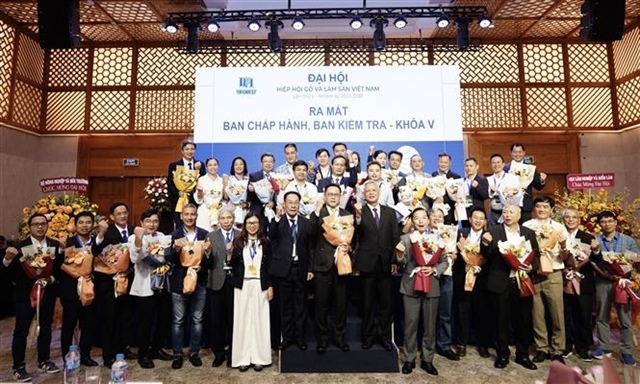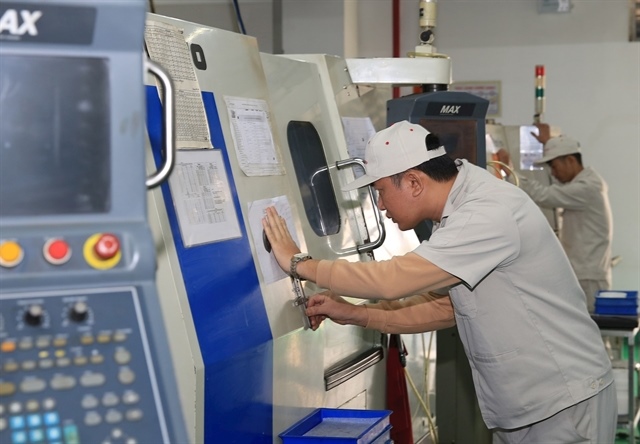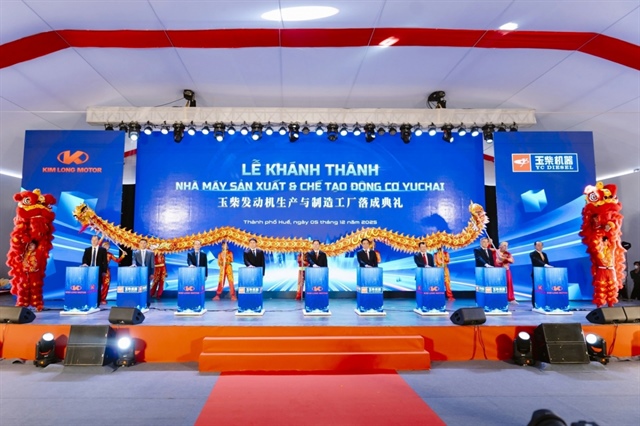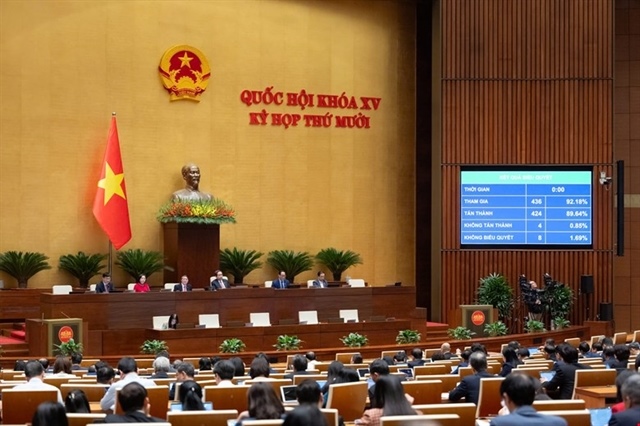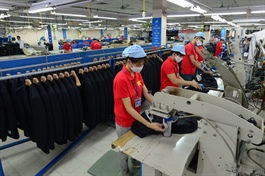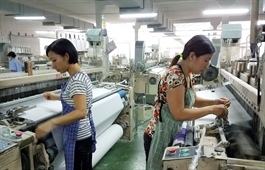Garment and textiles face reality of fierce global rivalry
Garment and textiles face reality of fierce global rivalry
Vietnam’s garment and textile sector has reached the 2021 export target, but is confronted with ever-growing competition from the Asian continent as well as other markets.

The high growth rate in the fourth quarter helped Vietnam’s garment and textile sector complete its export target of $39 billion, equivalent to 2019. But Le Tien Truong, chairman at the Vietnam National Textile and Garment Group, said that the growth of 11.2 per cent compared to 2020 does not indicate an “improvement in market share”.
According to him, Vietnamese garment and textile groups “don’t know what to do when the world stops and does not know what to do when the world trades again”.
The Vietnam Textile and Apparel Association (Vitas) has developed three growth scenarios for 2022. The most positive scenario is to strive for an export turnover of up to $43.5 billion and the lowest would be a maximum of $39 billion.
Vu Duc Giang, chairman at Vitas, said that freight rates remain high, and there is a serious shortage of empty containers, and shopping demand could decline again if the pandemic continues to surge.
The cost of transporting goods by air has increased fourfold, from around $4,250 per tonne to $17,000, which “has become a huge challenge for textile enterprises,” Giang said. A survey by the Research Centre for Employment Relations found that only 16.7 per cent of buyers agree to share air freight costs with businesses with long-term contracts. Factories that act as intermediaries have also difficulty communicating with buyers.
“Vietnam’s garment and textile sector is facing severe competition to export to major markets, especially the EU and the United States,” said Giang.
Currently, China, Bangladesh, Cambodia, and Pakistan are the main competitors of Vietnam in exporting textiles to the world. All have a more complete domestic supply chain than Vietnam.
Giang also worries, “Labour costs in Vietnam will continue to rise due to an increase in the annual base salary and the new insurance policy.”
Labour costs at garment companies in Bangladesh currently account for about 20 per cent of the cost of goods, while this figure in Vietnam is 26-30 per cent. Labour costs in Pakistan and Cambodia are also lower than in Vietnam.
According to the US Office of Textiles and Apparel, Bangladesh currently ranks third in exporting ready-made garments to the US, up about 27 per cent over the same period in 2020. China’s exports to the States reached $16 billion with a growth rate of 25 per cent, followed by Vietnam and Indonesia at 14 and 10 per cent, respectively.
Many US importers are shifting towards suppliers from Vietnam’s competitors after the production disruptions. The Bangladesh Knitwear Manufacturers and Exporters Association stated that garment exports to the US have continued to increase, with many buyers now turning to Bangladesh again.
Meanwhile, India is also rising, with self-sufficiency in input materials such as cotton and yarn, reasonable labour costs, and an efficient supply chain. The Indian government has set the goal of increasing its export turnover for the textile industry to $80 billion by the 2024-2025 period.
The Autonomous India programme and various other policies have come into play, helping the country’s textile industry to recover quickly in 2021. In 2020, the pandemic caused that nation’s textile and garment exports to decrease by 13 per cent compared to the previous year, only reaching $29 billion.
According to the Indian Textile Association, its government decided to extend tax and refund schemes for textiles until March 2024 and speed up the implementation of other preferential programmes to provide credit subsidies for capital in the textile sector.
Despite this harsh competition, Vietnamese garments and textiles could remain competitive if they make good use of existing advantages. For example, with the EU market, Vietnamese businesses could take advantage of the EU-Vietnam Free Trade Agreement to increase their market share.
But Vinatex’s Truong believed that businesses must be cost-competitive compared to Bangladeshi products, which have lower prices, and offer faster delivery than Turkish products, as these are closer to the EU’s border. Vietnam annually exports about $5 billion to the EU, equivalent to about 2 per cent of the total import turnover of garments and textiles in that market.
The global garment and textile sector is focusing on more efficient models to establish flexible relationships, with responsive suppliers, while the environment remains a priority.


